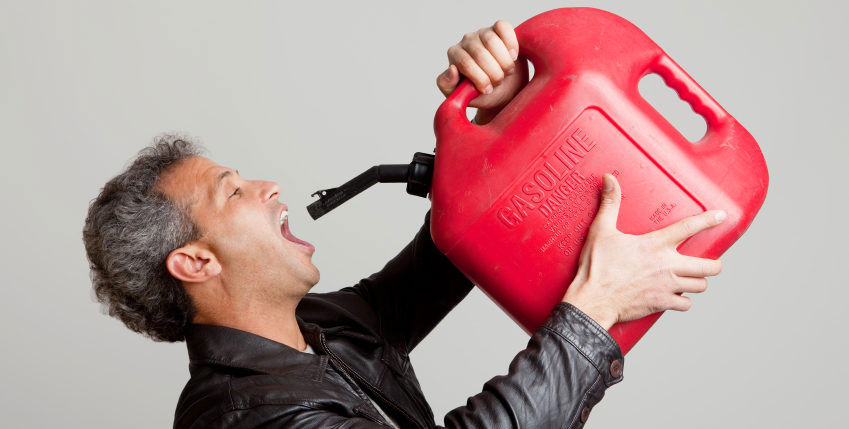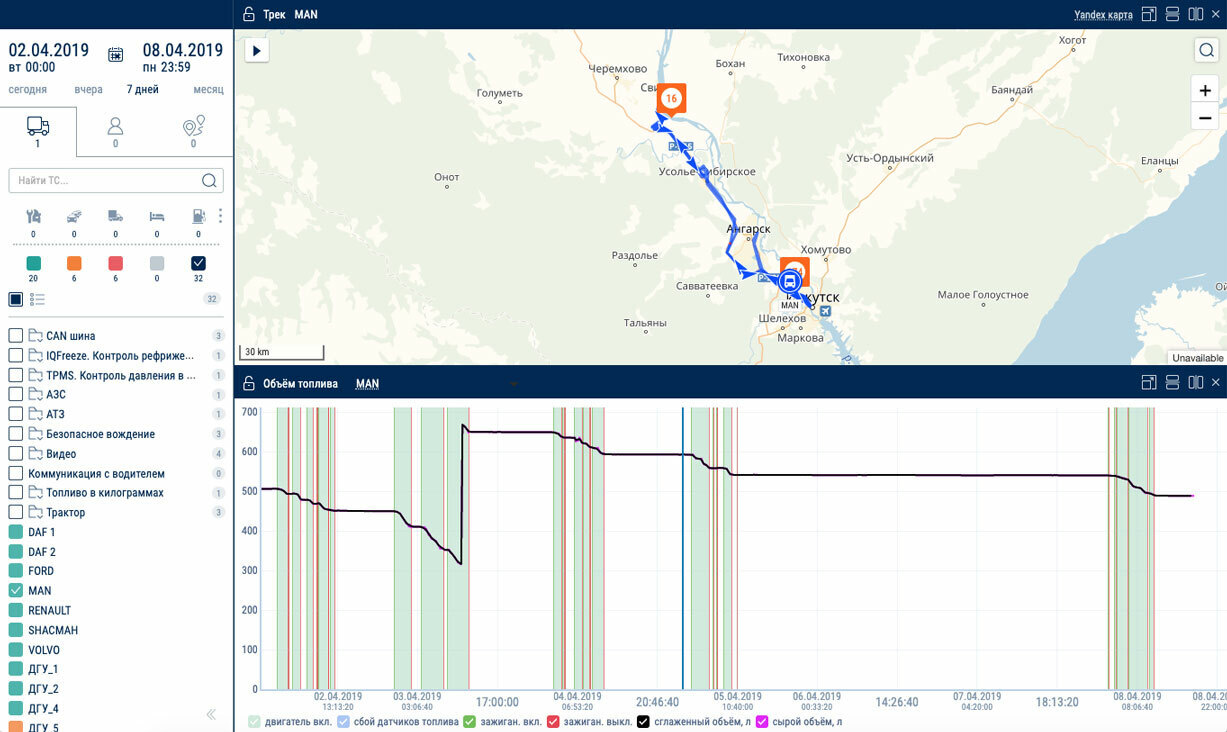Drivers draining fuel: effective ways to combat theft
In the Internet you can often find requests: how to drain fuel if there is GLONASS, how to drain fuel from a gas tanker, buy fuel receipts, drain through the “reverse”, cheat GLONASS, etc.
Fuel theft is a serious problem for business owners, especially if you have a lot of drivers in your fleet. The unauthorized use or sale of fuel can cause significant damage to a company's financial health.
However, it is important to note that not all drivers steal fuel, and this behavior does not represent a typical situation. Most drivers perform their duties in good faith and do not engage in illegal behavior.
There are effective methods to combat fuel theft that can help protect your business and reduce losses. In this article, we will look at a few strategies that will help prevent fuel theft and ensure effective control of resource utilization.

Ways to cheat on fuel
There are several ways that drivers can steal fuel. Some of these include:
Draining fuel from the tank
Fuel draining is one of the ways of unauthorized action. It does not require any special engineering skill or specialized equipment. The driver uses a hose and a spare canister to transfer the fuel from the fuel tank. As a result of one such action, up to several dozens of liters of fuel can be “stealthily” stolen. The possibility to attribute this loss to objective factors, such as the use of air conditioning, weather conditions, tire condition, cargo load, etc., all this allows the driver to hide the traces of his criminal act.
To hide the fact of theft, the driver can also tweak the odometer so that the fuel consumption in the reports corresponds to the mileage of the car.
To hide the fact of theft, the driver can also tweak the odometer so that the fuel consumption in the reports corresponds to the mileage of the car.
Some cunning drivers install an additional tank on the car and connect it to the main tank with a drain pipe. After 3-5 refuelings, several hundred liters of fuel accumulate in the tank, which the driver can drain and sell.

Buying “fake” fuel receipts
In many companies, gasoline reporting is still based on the submission of receipts, and some drivers are skillfully using this system to their advantage. They fill up with budget fuel and then submit “left” receipts, showing that they filled up with more expensive fuel. Thus, they receive the difference between the actual costs and the declared amount as undeserved income. It should be noted that gasoline prices can vary in neighboring regions by an average of 3 rubles per liter. Some truckers solve this problem by installing an additional tank and refueling at cheap gas stations in advance, in order to later submit receipts indicating a significantly higher cost per liter, or attribute mileage, thereby allegedly increasing fuel consumption, and keep the difference.
Cashing a fuel card
To prevent the purchase of counterfeit checks, some companies use the practice of issuing fuel cards to drivers instead of cash for expenses. This allows a supervisor to receive a detailed report of all transactions, including the location, time and amount of fuel expenses made by the driver.
One method of fraud involves the driver making up mileage and agreeing with the gas station operator to reimburse the driver for the “extra” kilometers traveled. For example, the operator debits the card for 300 liters, while the tank is actually filled with only 260 liters. The operator and the driver share the difference in money.
Another scheme: an experienced driver, with his driving style can save up to several liters of fuel for every 100 kilometers. When the savings reach significant amounts, they use the corporate card to refuel other people's cars, and take the money for the spent fuel.
Collusion with a fuel dispenser
There is a fraudulent scheme involving collusion between drivers and fuelers. This practice is often found at remote sites, such as construction sites, repair and agricultural work sites, and other similar places where special equipment works in a continuous mode.
For refueling of special equipment at such sites, private fueling agents are often engaged. By prior agreement with the drivers, they provide a little less fuel than is specified in the statement. The resulting “profit” is then divided between the driver and the owner of the ATZ. Settlement is usually made in cash.
Another way to save on fuel delivery is to buy fuel from dubious suppliers at a lower price. As a rule, such fuel is of low quality. As a result, when settling the money is spent less, and the owner receives a report, which indicates a larger amount that they would have spent on better quality “fuel”.
The driver of the gasoline truck can also steal fuel. Not refilling just a couple of liters of each technique, for a trip he can keep several hundred liters of fuel, which he then sells “on the side”.

There are many more ways to drain fuel from the equipment, rack up kilometers and make “fake” trips, etc.
On how to bring a driver to material and disciplinary responsibility for theft of fuel and lubricants.
Read here >>

How to prevent fuel theft
To prevent fuel theft in the fleet, a number of measures can be taken:
- Install a satellite-based vehicle monitoring system: Use GPS/GLONASS fuel consumption monitoring systems to track vehicle movements and monitor fuel utilization. High-precision fuel monitoring sensors and GPS trackers will detect discrepancies and anomalies in fuel consumption.
- Install video surveillance: There are intelligent systems of video surveillance on transport, which in conjunction with satellite monitoring system can detect fraud, as well as monitor the driver's condition and warn of violations. MONTRANS DVR is such an innovative system
- Implement a refueling authorization system: Use unique identifiers, cards or access codes for refueling. This will help control access and prevent unauthorized refueling. MONTRANS FMS is the latest automated fuel distribution management and control system that can help your organization improve accountability and achieve significant cost savings.
- Conduct regular inspections and checks: Regularly check vehicles and fuel tanks for leaks or damage. This will help detect problems and prevent potential theft.
- Integrate a fleet BI analytics system: Implementing a transportation analytics, management and control system MONTRANS.ANALYTICS is an effective measure to reduce transportation logistics costs, optimize planning, accounting and payroll processes through detailed analysis of vehicle usage. This will help identify potential discrepancies and unusual fuel consumption pattern.
The combination of these measures will help reduce the potential for fuel theft in the fleet and improve control over resource utilization.
As practice shows, already in the first month of operation of a satellite-based transport monitoring system, the company's budget saves up to 30% of fuel and lubricants, and investments made in the digitalization of the fleet pay for themselves in 3-6 months.

